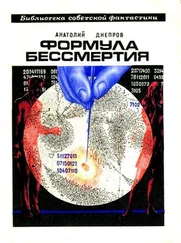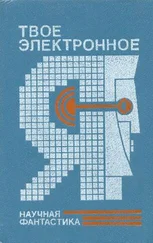Анатолий Днепров - Siema
Здесь есть возможность читать онлайн «Анатолий Днепров - Siema» весь текст электронной книги совершенно бесплатно (целиком полную версию без сокращений). В некоторых случаях можно слушать аудио, скачать через торрент в формате fb2 и присутствует краткое содержание. Город: Toronto, Год выпуска: 1962, Издательство: Collier Books, Жанр: Фантастика и фэнтези, на английском языке. Описание произведения, (предисловие) а так же отзывы посетителей доступны на портале библиотеки ЛибКат.
- Название:Siema
- Автор:
- Издательство:Collier Books
- Жанр:
- Год:1962
- Город:Toronto
- ISBN:нет данных
- Рейтинг книги:5 / 5. Голосов: 1
-
Избранное:Добавить в избранное
- Отзывы:
-
Ваша оценка:
- 100
- 1
- 2
- 3
- 4
- 5
Siema: краткое содержание, описание и аннотация
Предлагаем к чтению аннотацию, описание, краткое содержание или предисловие (зависит от того, что написал сам автор книги «Siema»). Если вы не нашли необходимую информацию о книге — напишите в комментариях, мы постараемся отыскать её.
Siema — читать онлайн бесплатно полную книгу (весь текст) целиком
Ниже представлен текст книги, разбитый по страницам. Система сохранения места последней прочитанной страницы, позволяет с удобством читать онлайн бесплатно книгу «Siema», без необходимости каждый раз заново искать на чём Вы остановились. Поставьте закладку, и сможете в любой момент перейти на страницу, на которой закончили чтение.
Интервал:
Закладка:
"Many were the sleepless nights I spent wrestling with this problem. At times the whole thing would strike me as absurd and impossible. But the idea haunted me constantly and gave me no rest. A self-improving electronic machine-SIEMA! This now became my chief object in life and I decided to dedicate myself to it completely.
"On the advice of Dr. Zalessky I retired from the institute after being discharged from hospital. I added to my pension, which was quite substantial since I was found unfit for work, by translating scientific articles. But in spite of the doctor's orders I soon set to work on my machine, my Siema, as I called it for short.
"To begin with, I read everything I could lay hands on about the electronic machines of that period. I reread a vast amount of books and articles on the functions of the nervous system in man and in the higher animals. I also made a thorough study of mathematics, electronics, biology, biophysics, biochemistry, psychology, anatomy, physiology and other seemingly unrelated branches of science. I realized that the only possible way to make a machine such as I had envisioned, would be by synthesizing the mass of data which all these sciences had accumulated and which had been summed up in cybernetics. At the same time, I gradually began to acquire the materials for the future machine. Its size was no longer a problem, for all the old-type electronic tubes could now be replaced by transistors, and the space formerly occupied by one tube could hold up to a hundred germanium and silicon crystals. The assembly too was simpler. I worked out a new layout for the magnetic memory of my Siema.
"For this purpose I acquired a glass sphere one metre in diameter and coated it on the inside with a thin layer of ferric oxide. To a swivel turret mounted in the centre of the sphere I attached several feeler-like needle-pointed rods that almost touched the inner surface. Each rod had an induction coil, and when electrical impulses were passed through, the needle-like points recorded them on the ferric oxide coating in the form of magnetized dots which, when need be, could be read by another feeler. The magnetic needles were so fine that up to fifty electrical impulses could be recorded on each square micron of the surface. In this way it was possible to record some thirty billion different code signals on the inner surface of Sie-ma's head. So you see, Siema would have a memory no less embracive than that of man!
"I decided to teach Siema to hear, speak, read and write. This was not so difficult as you might think. You may remember that as far back as 1952 the Americans built a machine which coded signals dictated to it. True, that particular machine responded only to the voices of its designers. Last century the German scientist Helmholtz established that vocal sounds had characteristic resonance tones depending on the frequency of vibration. He called them formants. For instance, the letter 'o' whether uttered by a man or a woman, a child or an old person, produces the same frequency constant. I took those frequencies as the basis for coding sound signals.
"It was more difficult to teach Siema to read. But here too I succeeded, thanks in large measure to the use of television tubes. Siema's only eye consisted of a camera lens which projected the text to the sensitized screen of the television tube, and the electronic beam that scanned the image produced a distinctive succession of electrical impulses for each of the scanned letters and symbols.
"Teaching Siema to write was simple. This was done exactly as in the old electronic machines. It was harder to make her speak. I had to devise a sound generator that responded to the electrical impulses fed into it. I chose a female timbre for her voice to match the name. So you were right when you surmised that Siema was a 'lady.' Why did I do that? Not, I assure you, because I felt any need of feminine society. No, the reasons were purely technical. The fact is that the female voice is purer and hence more easily reduced to the basic frequencies.
"Well, at last the principal sense organs, the organs of communication with the outside world, were ready. There remained the most difficult part of the job-to induce the required reactions to external irritants. Siema must first of all answer questions. Have you noticed how a child is taught to speak? 'Say Mama,' he is told, and he repeats 'Mama.' I started the same way. The word 'say' spoken into the microphone, produced the code signal that set the sound generator into motion. The electrical impulses from the microphone were flashed into Siema's memory, where they would be recorded and then returned to the sound generator. Siema repeated the word. This simple operation of repetition Siema performed perfectly. From this I gradually advanced to more complicated problems. For example, I would read aloud several pages of text in succession. Siema's memory recorded as I read, and at the command 'repeat,' she repeated everything with the utmost accuracy. And notice, she memorized the entire text at once. She had indeed what we call a 'phenomenal memory' because it consisted of magnetic impulses which could not be erased or lost. Later on Siema began to read aloud. I would place a book in front of her 'eye' and she would read. The impulses of the image would record themselves in her memory and return at once to the sound generator where they would be reproduced in the form of sounds. I must say I rather enjoyed listening to her read. She had a pleasant voice, and a good enunciation, though without much expression.
"I have forgotten to mention one peculiarity of Siema, the one, incidentally, which made her a self-improving electronic machine. You see, notwithstanding the vast range of her memory, she used it most economically. Whenever she read or heard some text that was unfamiliar to her she would memorize only the new words, the new facts and the new logical patterns or programs. If I asked her a question she had to form the answer herself out of the coded words deposited in various parts of her memory. How did she do this? She had stored in her memory programs for the answers to a vast number of questions; these set the order in which the magnetic rods picked out the necessary words. As the scope of Siema's memory increased, the number of recorded programs increased as well. Siema's organism was provided with an analytical circuit which 'screened' possible answers to a question put to her and released only the answer that was logically flawless.
"In assembling Siema I provided for tens of thousands of spare circuits which were to go into operation automatically as the machine developed. Were it not for the miniature radio parts the machine would have occupied more than one building. As it was, however, it fitted into a round metal column the height of a man with the glass sphere as the head. In the central part of the column was attached a bracket for the eye looking downward onto a bookrest. The bookrest was adjustable and had an automatic device for turning pages. Two microphones were attached to the right and left of the eye. A loudspeaker was inserted in the column in the space between the eye and the bookrest. At the back of the column I installed a typewriter and a shelf for a roll of paper.
"As the number of facts and standard programs stored away in her memory increased, Siema began to perform more complicated logical operations. I say 'logical' because besides solving mathematical problems, she answered a great variety of questions. She read a vast number of books and memorized their contents perfectly. She knew nearly all the European languages and could translate easily from any of them into Russian or any other language. She had stored up an enormous amount of knowledge in several branches of science, including physics, biology and medicine, and when necessary could supply me with the reference material I needed.
Читать дальшеИнтервал:
Закладка:
Похожие книги на «Siema»
Представляем Вашему вниманию похожие книги на «Siema» списком для выбора. Мы отобрали схожую по названию и смыслу литературу в надежде предоставить читателям больше вариантов отыскать новые, интересные, ещё непрочитанные произведения.
Обсуждение, отзывы о книге «Siema» и просто собственные мнения читателей. Оставьте ваши комментарии, напишите, что Вы думаете о произведении, его смысле или главных героях. Укажите что конкретно понравилось, а что нет, и почему Вы так считаете.





